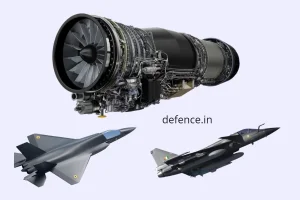- Views: 3K
- Replies: 29

In a potentially embarrassing incident for the Russian military, reports have emerged that a cutting-edge Russian S-70 Okhotnik (Hunter) stealth drone was downed on October 5, 2024, over the Ukrainian city of Kostiantynivka in the Donetsk region.
While initial reports misidentified the aircraft as a Su-25 jet, analysis of the wreckage confirmed it to be the advanced unmanned combat aerial vehicle (UCAV).
The incident, first reported on Telegram channels, has sparked speculation about the cause, with a source within Ukraine’s Defense Forces claiming "friendly fire" from Russian forces. This claim is supported by several Russian military bloggers who identified the wreckage as belonging to the S-70 Okhotnik.
The S-70, designed to operate as a "wingman" drone alongside the Su-57 fighter jet, represents a significant advancement in Russia's drone warfare capabilities. Its loss is a considerable setback for the Russian military, especially given its advanced sensors and combat capabilities.
On the other hand some unconfirmed reports circulating on Russian Telegram channels, the incident occurred during a test flight near the frontline. It is suggested that the drone's operator lost control, leading Russian commanders to order its destruction to prevent capture by Ukrainian forces. Some accounts claim a Su-57 fighter jet was used to carry out the order.
Justin Bronk, Senior Research Fellow for Airpower and Military Technology at the Royal United Services Institute (RUSI), called the incident an "embarrassing failure" for the Russian Aerospace Forces (VKS). He suggests the drone may have been undergoing tests of its sensors or command-and-control systems (C2) near the front lines.
This incident highlights the ongoing challenges with coordination and communication within Russian forces, issues that have plagued their operations in Ukraine since the conflict's beginning.
The destroyed drone is believed to be an earlier demonstrator model, potentially lacking the advanced stealth features of more recent variants. This raises questions about why it was operating in a heavily defended area with robust air defense systems.
The wreckage of the S-70 presents a valuable opportunity for Ukrainian forces to analyze the technology. Experts believe they will attempt to recover as much of the drone as possible for foreign material exploitation (FME) before Russian forces can destroy it.
Despite the widespread reports and speculation, the Russian military has yet to issue an official statement explaining the circumstances surrounding the loss of this critical asset.
The S-70 Okhotnik, developed by Sukhoi and Russian Aircraft Corporation MiG, is a key component of Russia's sixth-generation aircraft project. Incorporating technologies from the Su-57 fighter jet, it is designed for both independent operation and as a "wingman" for manned aircraft.
This incident, if confirmed as a friendly fire incident, marks the first confirmed loss of an S-70 Okhotnik and could potentially delay the deployment timeline for this next-generation UCAV.

